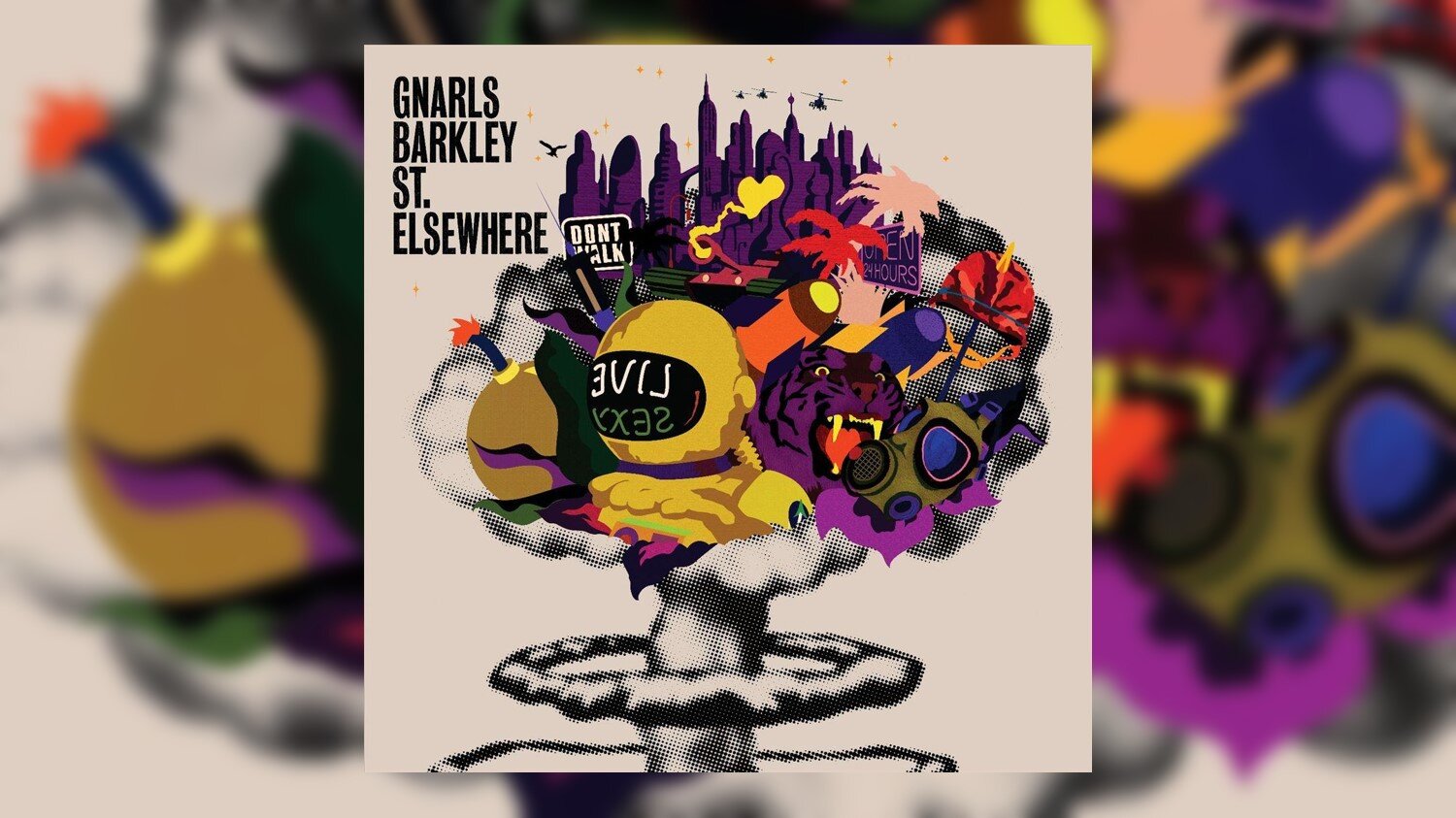Happy 15th Anniversary to Gnarls Barkley’s debut album St. Elsewhere, originally released April 24, 2006.
When I look back at the not-too-distant decade of the 2000s, one of my favorite musical journeys was the collaboration between CeeLo Green and Danger Mouse that formally manifested in the form of their debut album as Gnarls Barkley, St. Elsewhere.
Who can ever forget the proclamation delivered by OutKast’s André 3000 when the group accepted their Best New Artist Award at The Source Magazine’s annual awards ceremony in 1995? “The South got something to say,” André declared to the sneering, New York City audience as the group and their entourage left the stage. Truer words within the hip-hop community have perhaps never been spoken as the American South, with Atlanta as its headquarters, would eventually rise to become the epicenter of hip-hop and arguably the mecca of African American culture.
One of the most distinct voices from within this movement happened to leave a huge imprint on the very album that allowed André to take the stage that evening. OutKast’s 1994 debut LP Southernplayalisticadillacmuzik contained two songs that featured their affiliated group, Goodie Mob. Southern’s third single in particular, “Git Up Git Out,” featured a Goodie Mob member with a high tenor and perhaps the strongest southern accent, who delivered a classic verse, to help create one of the album’s most memorable moments.
This was the introduction of Mr. CeeLo Green, who was proving himself to be a standout member of Goodie Mob and cornerstone of the southern rap staple The Dungeon Family circa 1995. From the group’s debut single “Cell Therapy,” it was apparent that CeeLo had the skill and charisma to ascend to become one of hip-hop’s premier lyricists. Moreover, his effortless, melodic vocal delivery allowed him to steer through the soulful tracks provided by the production trio Organized Noize, offering early indications that he was inevitably destined for even further stardom.
After three critically and commercially successful albums with Goodie Mob, that’s exactly what CeeLo set out to accomplish with his inaugural solo effort, 2002’s Cee-Lo Green and His Perfect Imperfections. The LP may have been a few years premature, especially for an artist previously only associated with the hip-hop genre. Perfect Imperfections blended funk, soul, gospel, and R&B at a time when I don’t remember anyone else thinking that far outside the box. Songs like the album’s lead single “Closet Freak” landed as the apex of CeeLo’s musical gumbo and were a premonition to his ever-expanding artistic imagination.
In March of 2004, CeeLo released his sophomore album, Cee-Lo Green…Is the Soul Machine, a project that found him taking steps in returning toward more traditional contemporary R&B, infused with hip-hop. His all-star cast of producers included The Neptunes, Organized Noize, Jazzy Pha, and Timbaland who assisted with the most successful single “I’ll Be Around.”
It was during this time that a then-little known American, London-based producer by the name of Brian Burton was beginning to build a more familiar name for himself under the stage alias of Danger Mouse, after he cleverly remixed vocals from Jay-Z’s The Black Album (2003) with samples from The Beatles’ self-titled 1968 album, more reverentially known as The White Album. The mashup-mixtape which Danger Mouse titled The Grey Album has, in time, received critical acclaim and praise from Jay-Z and The Beatles’ Paul McCartney. The project’s success helped Danger Mouse earn his next role as the premier producer for Gorillaz’ second album Demon Days (2005), which led to huge international fame. Burton would go on to form the duo DANGERDOOM alongside the late great MF DOOM.
Both Danger Mouse and CeeLo’s respective, diverse catalogs seemed to prime them perfectly for their inventive collaboration as Gnarls Barkley, which ultimately delivered one of the decade’s most unique and sonically fulfilling musical experiences in St. Elsewhere. The LP’s lead single for instance, “Crazy,” is one of my all-time favorite examples of perfect musical synchronicity. Danger Mouse’s cinematic production helped CeeLo’s southern soulfulness soar to heights that his powerful vocals never quite reached before, which is why “Crazy” is universally recognized as one of the definitive songs of its era.
After finding success with Gorillaz and making hip-hop gems with respected lyricists such as MF DOOM and Organized Konfusion’s Prince Po, Danger Mouse amassed an impressive arsenal of beats that enabled CeeLo to launch a full auditory assault using all of his vocal weaponry. The album-opening “Go-Go Gadget Gospel” is a case-in-point, as the song allows CeeLo to return to his Sunday morning origins, with the thunderous electricity of a gospel soloist in front of a Pentecostal choir. The vocals are simultaneously complemented and contrasted with Danger Mouse’s Bebop inspired horns and drums.
The title song “St. Elsewhere” slows the pace while maintaining Gospel remnants, but with Danger Mouse providing more of an eerie backdrop, allowing a neo-soul vibe to pervade the song that set the tone for the overarching, tortured soul aesthetic of the LP.
St. Elsewhere has hints of every genre that CeeLo either exceled in or teased at throughout his experimental musical career up to that point, and these varied yet symbiotic influences coalesced succinctly with Danger Mouse behind the boards. Where CeeLo’s vocals had always been as savory as southern cuisine, Danger Mouse’s production helped propel him to a new level and for new audiences. St. Elsewhere helped blend genres as cohesively as any album had ever aspired to do, and in the process, the album helped redefine what pop music looked and sounded like in 2006 and beyond.
LISTEN:

